It’s January. Are you in planning mode?
Of course, you are! Me too.
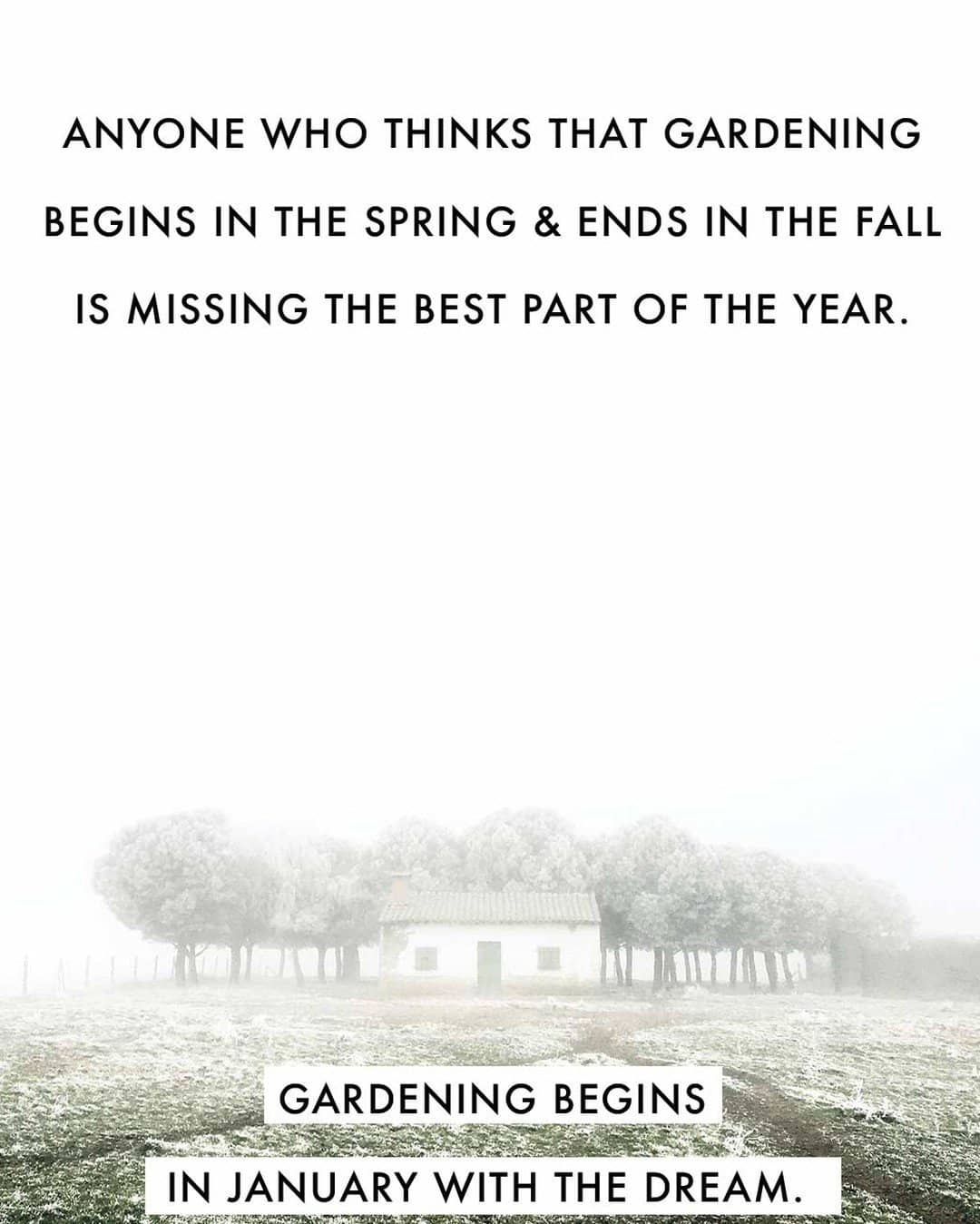
This year, I’m planning windbreaks and natural barriers, berry gardens, possibly some new trees, and the completion of the patio and arbor. Plus, every year, there is a new container garden scheme that is always a fun, creative challenge.
You might remember this post about black slats from last summer (you know where I was all talk about getting the arbor over the patio done – but then it didn’t get done….well this time I mean it).
I mean it so much I am planning the containers that will sit at the base of all those gorgeous black-stained posts and slats
(Note: My optimism about the completion of this is overflowing now that we have decided to hire a carpenter to finish the job rather than doing it ourselves – sometimes you just have to be realistic).

Container Garden Plants That are Great for Texture and Foliage
As I plan out the container garden, pots, and accessories, I am so tempted to add a strong thread of another color, but green and black and white are just so great together that I have decided (at least for this year) I must resist.
I’m big on clusters of pots that go but don’t match, with different heights and shapes and one type of plant per pot. Keeping the plants separated from each other—each in its own little manageable world—always seems to work better for me, and I can re-arrange them much more easily.
What do you think of the mix?
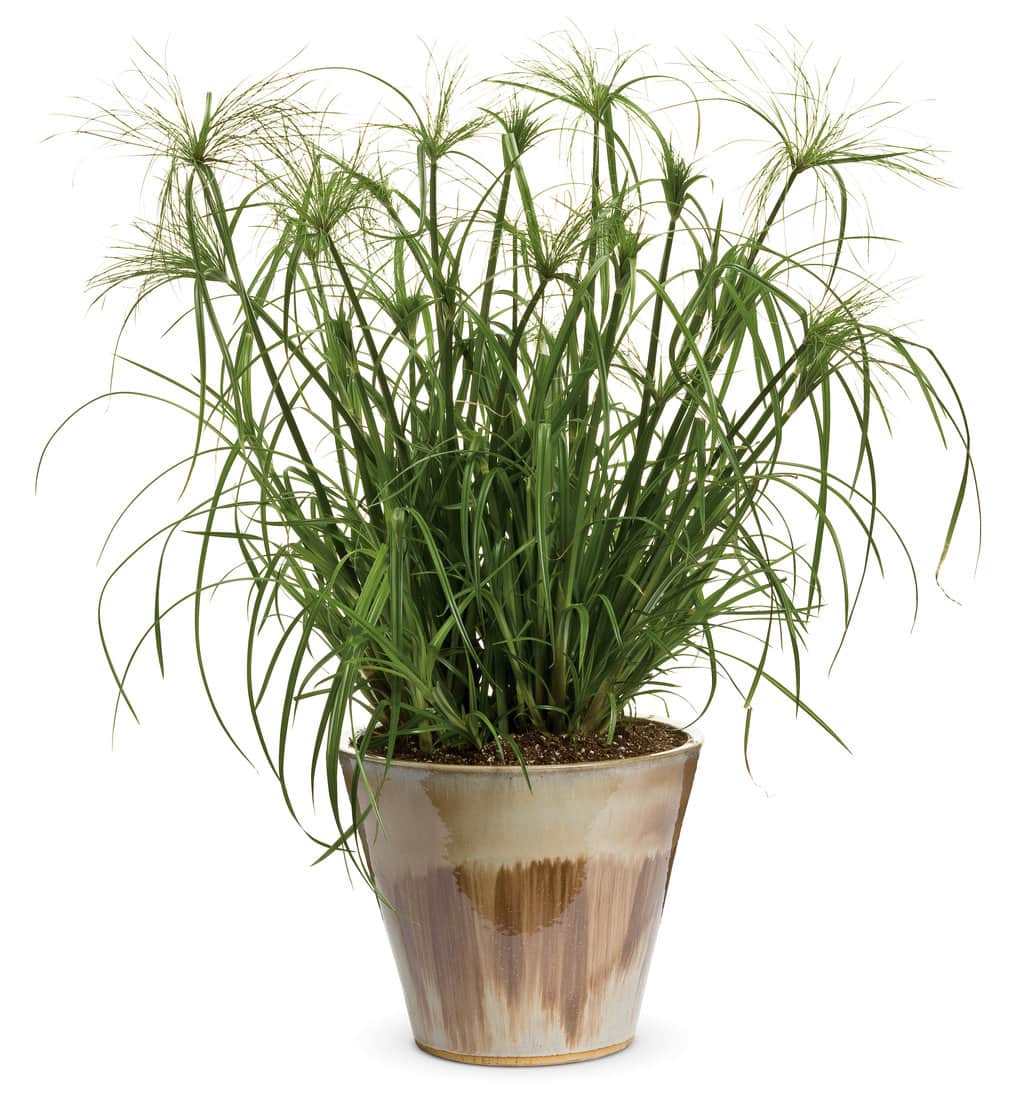
Egyptian Papyrus – King Tut Grass (Cyperus papyrus)
I bought one of these for one dollar on close-out at the end of last season. I wanted to see how we would get along. We were all fine and good until I moved King Tut to the porch (because the weather was getting cold), and then he up and turned brown next to a cold window. Papyrus doesn’t want to be cold.
I think if I put him in a bigger pot (lined with plastic garbage bags and filled with more water) and set him outside for the summer we will be friends again. (well at least his cousin and I will be friends, original King Tut is sadly deceased).
I have since grown the dwarf variety of this plant (read about it here) with huge success. Papyrus (wether full size or the dwarf variety) are dramatic plants that are fun to grow in a container. They will give you height and texture (it looks like clumps of har on sticks) that can’t be found in another plant.
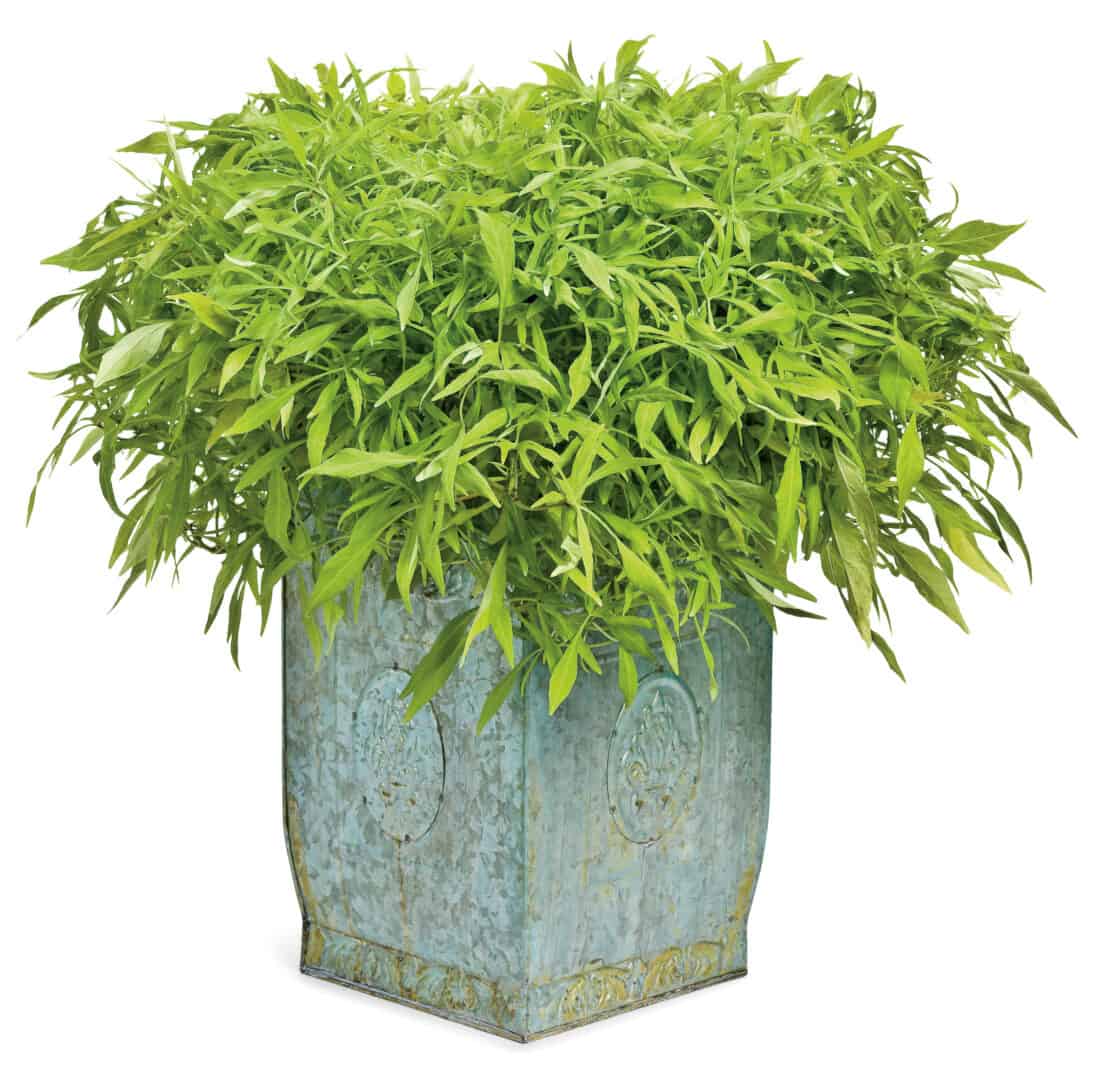
Sweet Potato Vine – Ipomea Emerald Lace (Ipomoea batatas)
Ipomea Illusion Emerald Lace—Face it, sweet potato vine is just about the easiest container plant around. And that is why you see it everywhere (And I mean everywhere).
Despite its ubiquity, I’m partial to this one because it almost looks like one of those really cool little bamboos that I can never find—but you know, with all the good qualities of Ipomea (like being way cheaper, more accessible, and not obnoxious invasive like many bamboos!).
Emerald Lace has a spread of 24-36 inches – it requires a space of 10-12 inches to properly grow and has an optimal height of 8-10 inches. It will mound nicely (where other vines will get much lankier nad throw out long tails that constantly need to be clipped back) making it great for low maintenance containers.
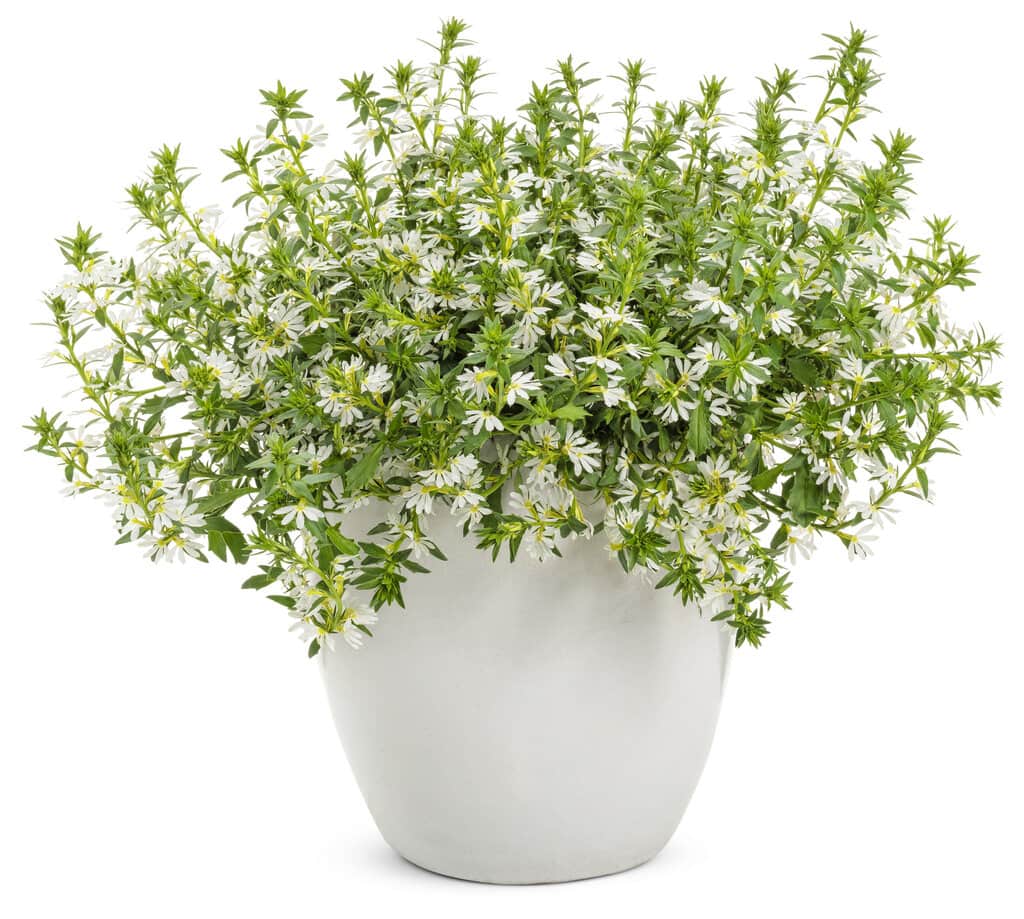
Scaevola aemula – Whirlwind White Fan Flower
White Scaevola Whirlwind—I love the profusion of flowers and the rough, slightly wild texture and shape. It reminds me of the heaths that I fell in love with when I lived in England.
I know this post is about foliage plants, and this plant is technically covered in white flowers for most of the season – but I make an exception. Scaevola’s flowers are kind of like leaves – they are flat and like white fans that flutter off the whole plant.

Coleus Varieties
Dipt in Wine Coleus (Coleus scutellarioides) – Years ago I used to plant huge corporate beds in the shadow of a large parking structure. Of all things that I tried in those beds over the years, Coleus was the only thing that never let me down (for the life of me I never understood why people didn’t steal them like they stole other stuff). They are rock solid and good for a break in the green.
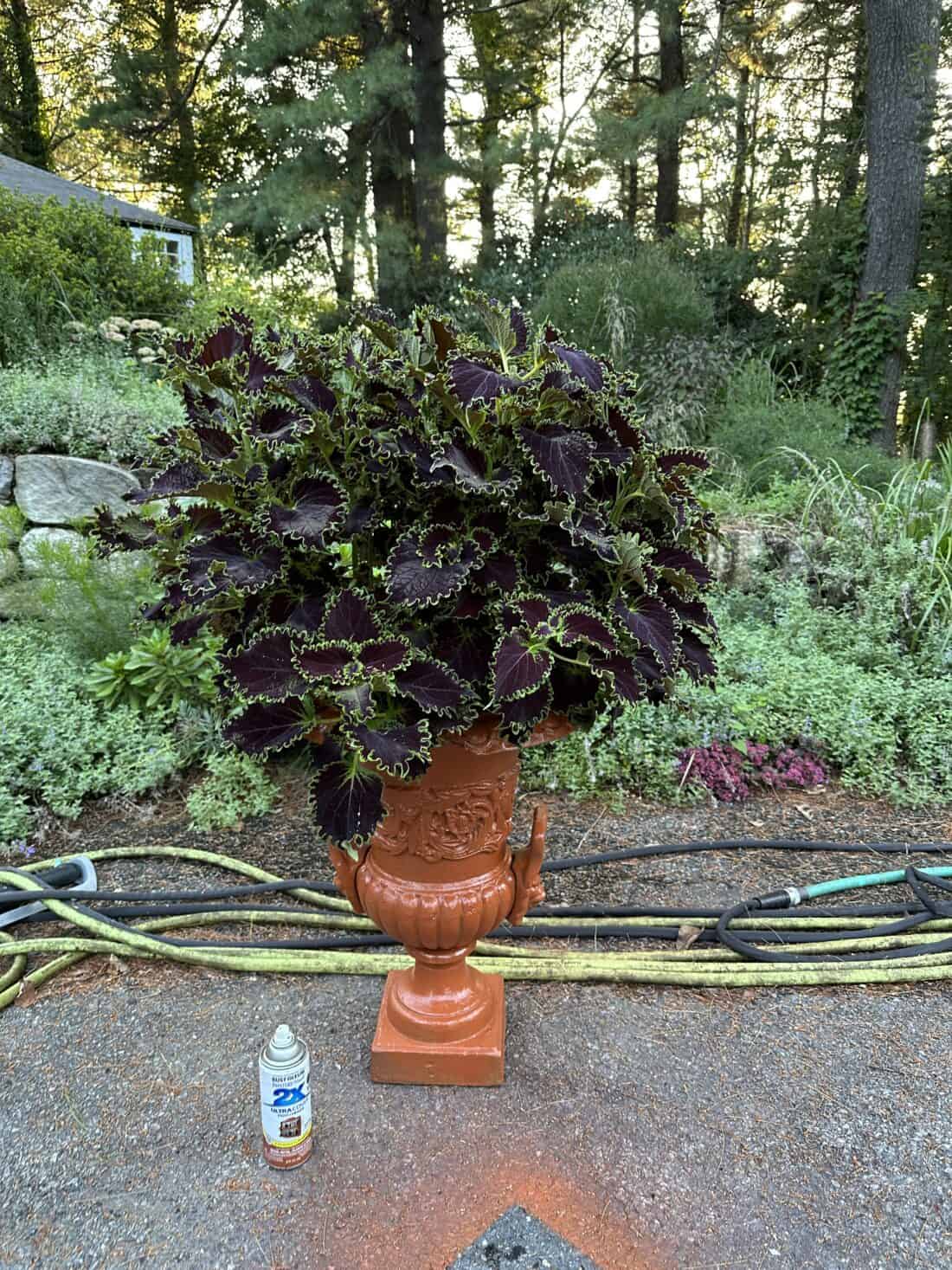
Boxwood, Scotch Moss and Succulents
Boxwood and moss and succulents (including my donkey tail sedum) – I’ve got all three of these elsewhere in my garden and I think they are the threads that will tie these container groupings to the rest of the garden.
I can’t decide, is it missing something or is it good as is? I’m pondering the addition of a Argyanthemum Molimba but as much as I love those sunny little faces, I wonder if perhaps a more sophisticated plant like White Chiffon Hibiscus or a delicate white clematis might be better. Thoughts?
-Rochelle
HOW TO CREATE STYLISH COLLECTED GARDENS IN POTS
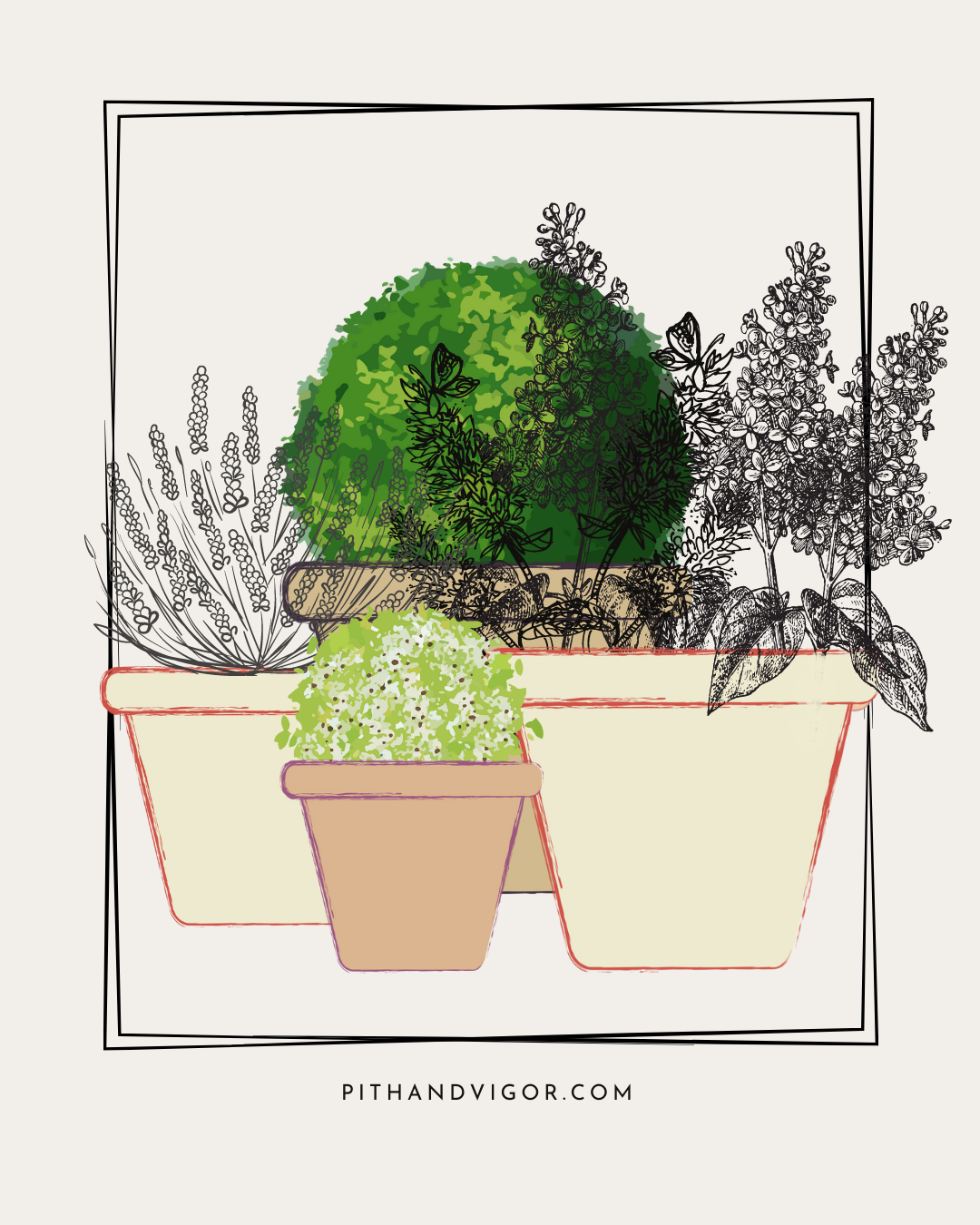
Images: courtesy of Proven winners, and 123rf.com.
I think being in planning mode is always the best. You can dream about what your garden is going to look like (without having to go outside into the cold), and still start taking the steps you need to get it accomplished. A lot of gardeners don’t like January, but I think it’s because they haven’t discovered how fun planning can be.